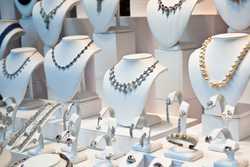- Frame material: Plastic
- Lens type: Acrylic
- Prescription type: +1.25 to +3.50
- Colors: Light brown tortoise, dark brown tortoise, black and tortoise
- Price at publish: $29.95
Best Reading Glasses: 19 Options for Life’s Fine Print (And More)
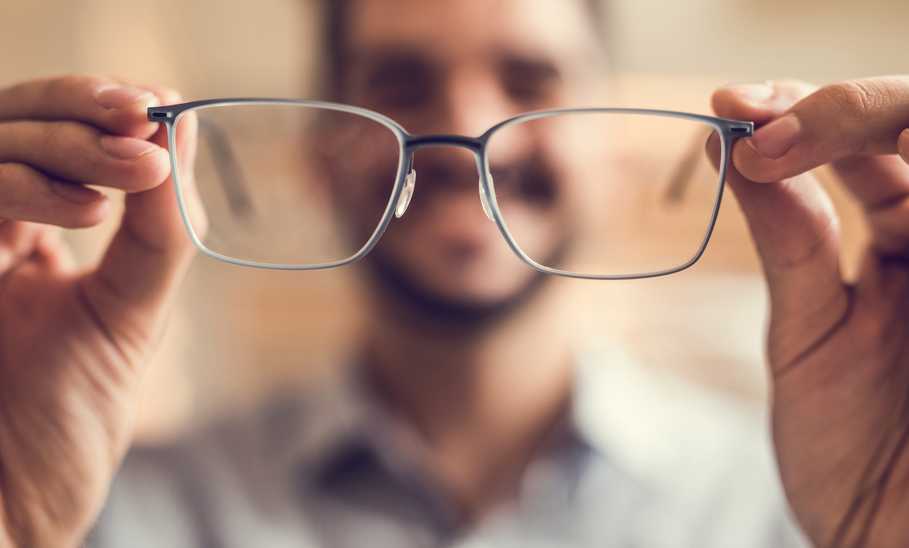
Our evaluations and opinions are not influenced by our advertising relationships, but we may earn a commission from our partners’ links. This content is created by TIME Stamped, under TIME’s direction and produced in accordance with TIME’s editorial guidelines and overseen by TIME’s editorial staff. Learn more about it.
Reading, whether it be an “old fashioned” book or a Kindle, and prolonged screen time can cause eye strain and, sometimes, headaches. “As we get older,” says Jovi Boparai, MD, an ophthalmic surgeon and founder of CorneaCare, “we can also develop presbyopia, which occurs when the natural lens in the eye loses flexibility and is unable to focus light on the retina."
This loss of flexibility typically leads to difficulty with reading, he explains, and many people will notice that while they’ve never needed glasses for distance vision, they’re unable to see comfortably up close. According to Dr. Boparai (and the other experts I spoke to), this is a natural phenomenon and occurs in many people, starting around 40 to 45 years of age. This is where reading glasses come in.
Meenal Agarwal, OD, an award-winning optometrist, distinguished entrepreneur, and owner of Pickering Town Centre Optometric Clinic in Ontario (as well as two other practices), says generally, the “term ‘readers’ refers to glasses with magnification, not prescription lenses.” Readers are available at pharmacies, supermarkets, and convenience stores. You’ve probably noticed a display tree or two filled with glasses at your neighborhood grocery or drug store.
“They come with magnification strengths that begin at +0.50 and go up to +4.00, in increments of 0.25 or 0.50,” explains Dr. Agarwal. “On top of that, they’re available in a veritable cornucopia of styles, colors, and shapes with varying features.”
While a licensed optometrist will help determine which magnification strength you need, this guide serves as an excellent starting point for some of the best reading glasses based on quality, features, and styles suitable for various situations and needs.

If you want to be able to look up and see things clearly in the distance (or just the television across the room) without removing your readers or sliding them down your nose, bifocals may be just what you need. The top portion of the lens is clear without magnification, while the bottom works just like any other pair of readers. The Actor Bifocal from Readers.com has a round frame shape and is available in light or dark brown tortoise or with black lens frames and tortoise arms.
Bifocal readers in a tortoiseshell frame with a round lens at a mid-range price point.

Chunky, square readers with a retro vibe from Peepers available in a range of unique and fun colors.
As someone who always wears prescription glasses, I’m a fan of Warby Parker. They have excellent customer service and you can order up to five frames to try on at home for free. I own and love these particular frames. They’re my everyday glasses; they’re understated and stylish without calling unnecessary attention to themselves. If you do want to call some attention, consider the Haskell in one of the other available colors like crystal with maple or whiskey tortoise. Shopping tip: Warby Parker is one of the best places to buy eyeglasses online and the best places to buy contacts online. Their Tilly sunglasses made our list for the best sunglasses for women, while their Harris design made our list for the best sunglasses for men.
Understated, classic frames with round lenses from Warby Parker.

If you frequently misplace your reading glasses, consider buying a five-pack. This set from Gaoye includes five pairs of lightweight resin framed glasses. The lenses are anti-glare, blue light filtering, and (according to the company) explosion-proof. So, while you may lose your glasses on the regular, at least the lenses will still be intact when (if) you find them again.
Budget-friendly square shaped glasses sold in a five-pack of lightweight resin frames.

These readers from Foster Grant fold completely flat and fit into a slim, low-profile case (which is included). The lenses are both impact and scratch-resistant and there are adjustable nose pads for a perfect fit. If you’re looking for a good, basic, unobtrusive pair of reading glasses, these are for you. They’re what I like to refer to as “spectacles” (if you know you know).
Fold-flat, metal, micro readers from Foster Grant that fit into a slender carrying case (included).

Multi-focus lenses have three different lens strengths in one—like prescription progressives, but with one more level. The most powerful magnification is on the bottom third for reading; the middle has slightly reduced power for computer use, and the top third has about half the strength as the bottom—so you can see people while interacting with them. The anti-reflective, impact resistant, and scratch-resistant lenses sit in stylish and sophisticated tiger striped frames. I, for one, think we could all use more tiger stripes in our lives.
Remember that microfocus readers can cause problems if they’re not well suited to your face size and shape. Consider consulting an eye doctor if you want to go this route.
Multi-focus readers from Foster Grant in a round tiger striped, stylish frame.
I’m always a sucker for anything vintage-inspired, so I especially love the round retro shape of these readers (and the fact that they come in multiple color options). They have a plastic frame with spring hinges and are lightweight enough that sometimes you may forget you’re wearing them. They’re also a good quality for the price, which, at $15 is super affordable. Buy multiple pairs, so you can keep them in strategic places around the house. Eyekeeper also has a convenient eye test to help you determine how strong your readers need to be.
Vintage looking, round plastic readers from Eyekeeper available in a range of tortoise shades and colors.
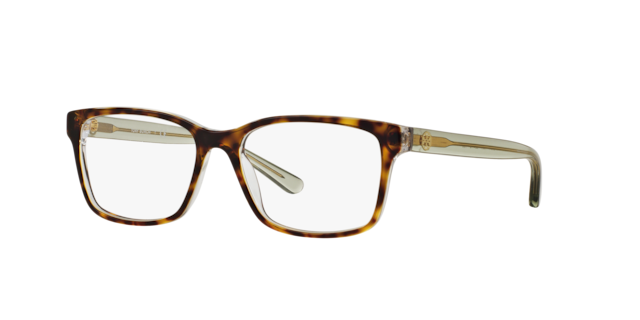
If you love designer frames, these from Tory Burch may strike your fancy. They’re available in two different colors: Tortoiseshell with crystal arms or navy with pinot arms—both are super stylish. Basic magnification is included in the reader lens price when buying from GlassesUSA, or you can choose a prescription lens option (some prescription lenses are included in the price).
Classic tortoise shell designer frames from Tory Burch.
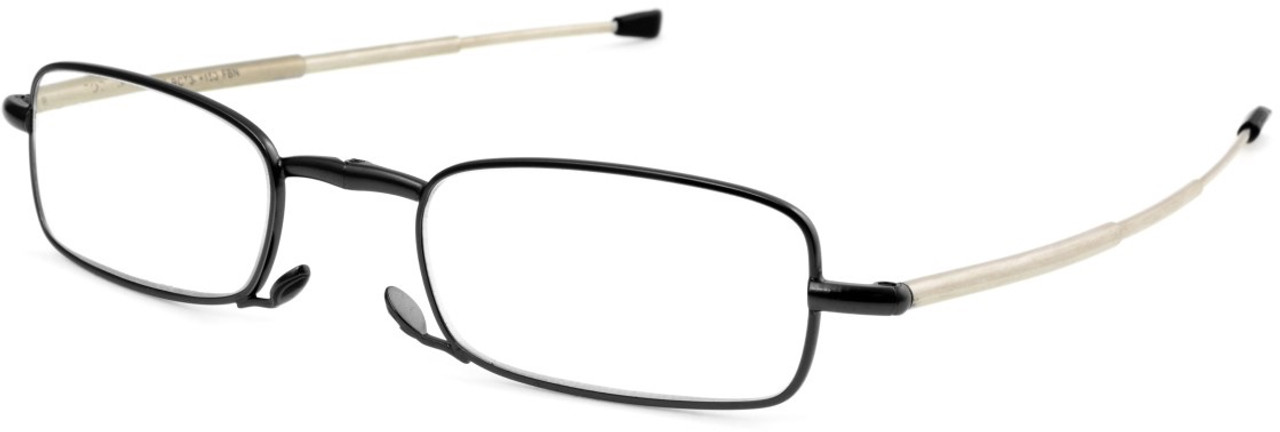
This pair of glasses is a micro-reader style that folds down and fits into its own compact case. You can easily slip them into your back pocket so you have them with you at all times. They’re also thin enough to wear with a low brimmed hat so you don’t have to worry about compromising your style.
Lightweight, compact, classic square metal reading glasses from Foster Grant.

Are you concerned about the amount of time your kids spend in front of their computer screens? Or, do they complain of headaches? A pair of blue light reading glasses can help. These e.Glasses from Foster Grant filter up to 30% of potentially harmful blue light while also providing UVA-UVB protection.
Blue light kid’s reading glasses with no magnification.

If you want something besides the same old tortoise shell or black—not that there’s anything wrong with either of those—these cat-eye readers from Zenni come in floral, polka dot, and pink (more of a rose hue). With anti-scratch lenses and a price that can’t be beat, you’ll definitely be seeing the world through rose-colored glasses. Or floral. Or polka dot.
Cat-eye glasses with blue light blocking available in floral and polka dot prints as well as solid pink.

These computer glasses from Benicci feature a lightweight, flexible frame that offers comfort and durability. The lenses have UV protection as well an anti-glare coating and protection from blue rays so you can work, surf, game, or watch television with less eye fatigue. Their classic square style works across genders and they come with a protective case for easy transport.
Blue light blocking, non-magnified, reading glasses with UV protection and anti-glare coating for computer work.
Warby Parker provides one of the best shopping experiences when it comes to eyeglasses of any kind. Select up to five frames at a time to try on for free at home. They arrive in a compartmented box, return shipping paid for. The site provides instructions and guidelines for measuring, as well as the option of uploading a prescription if you have one.
The Esme in classic sesame tortoise comes in three different widths and the squarish cat-eye lenses look great on a range of different faces. All Warby Parker glasses include free adjustments in person if you happen to live somewhere there’s a physical storefront (mainly in the NYC area).
Tortoise glasses with a square cat-eye lens shape from popular retailer Warby Parker who offers at home try-ons via their online site as well as physical stores in select cities.
,gravity=Center,allowExpansion&q=85)
For a pair of lightweight, classic, minimalist readers, these delicate metal wire frames from Eyebuydirect can’t be beat. Featuring a large round lens, the frames come in a range of colors including black, rose gold, silver, and blue. Priced at only $39 for +1.5 index lenses, you’ll likely be able to afford a pair in each color. Available in three different sizes to best accommodate the widest range of people. If you pay $19, you can even get your new glasses in a mere two days.
Lightweight, thin metal, classic round glasses from Eyebuydirect available in a range of colors and sizes at a budget friendly price.
Don’t be confined to just one single pair of readers. This five-pack from Eyekeeper comes with five different frame colors including black, brown, and tortoise as well as a pair of sunglass readers with a classic, square, vintage inspired lens shape. They feature flexible spring hinges and scratch-resistant lenses.
Inexpensive pack of assorted colored readers in a classic, squared, vintage shape.
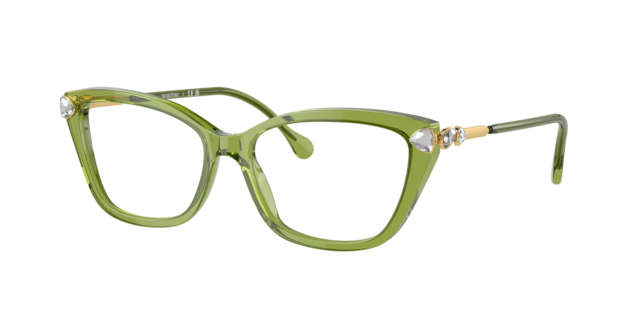
As someone who wears prescription glasses, I equate progressive lenses with glasses like mine that contain prescriptions to correct both distance and near vision. Unlike traditional bi-focal lenses, these Swarovski glasses don’t feature the telltale line across the lenses.
While Dr. Heyman says progressive reading glasses (also known as multifocal lenses) do exist and provide a “gradient of increasing lens power for reading and other close-up work, most require a custom prescription and fitting by an eye care professional.” The reason for this is that the varying strengths need to be positioned appropriately in the lens for your individual eye and shape face. If they’re off, you may experience headaches and/or need to constantly adjust the glasses on your face in order to see clearly.
I recently purchased a couple new pairs of glasses with progressive lenses (using my prescription). These frames from Swarovski (who knew Swarovski made eyeglass frames?) immediately caught my eye (haha). I gravitated straight for them amidst a sea of frames at my local LensCrafters store. Their shade of green is decidedly unique and I love the little splash of bling at the sides from the Swarovski crystals. I thought I would save them for dressy occasions but like them so much, they’re now my everyday pair, offering just the right blend of sophistication and quirkiness.
Striking green, well-made metal and acetate frames from Swarovski, complete with a couple crystals on either side of the lenses.

If you’re confident in your prescription strength selection and want to try out a pair of multi-focus lens readers, the Foster Grant Conan offers a great option. They feature eight different strengths; the bottom third of the lens is outfitted with the highest strength (chosen by you) for reading, the middle features slightly reduced magnification for computer work and the final, top third contains about half the strength of whatever you choose for the bottom third. This allows for a clear view of someone seated across from you at a table or desk.
Priced at a little less than $38, they’re also incredibly budget friendly—not to mention stylish.
Multi-focus, square, tortoise readers from Foster Grant at a budget friendly price.

I love these round frames from Eyebobs because they come in a wonderful selection of 15 bright colors, none of them boring, like the tortoise with navy, caramel tortoise, or fire engine red. Add to that smudge-proof and scratch-resistant lenses and a vibrant, modern look and it’s easy to see why they’re one the company’s bestsellers. Available in either narrow or wide.
Modern, quirky round glasses from Eyebobs available in a range of bright colors, two widths, and with standard or progressive lenses.
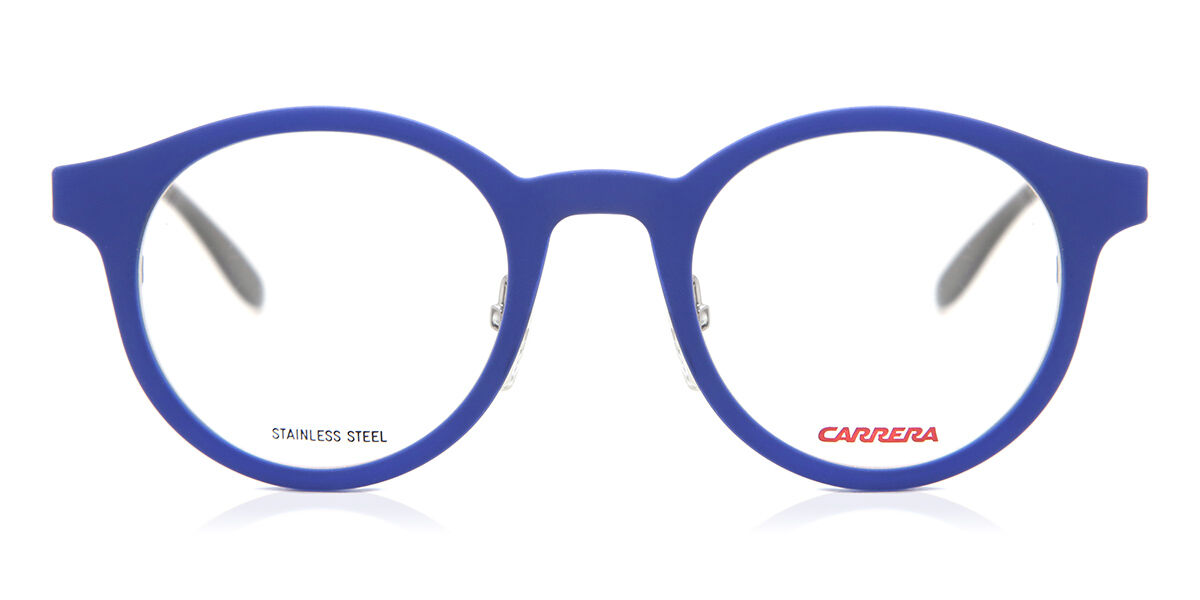
When I was a kid (in the 1970s and ‘80s) my mom (who wore prescription glasses) had this amazing pair that included a variety of brightly colored frame inserts that snapped onto a base metal glass frame. The inserts (or appliques), made from thin metal, included two round pieces and two long, slender pieces that clicked into place. They all lived in a convenient storage box on my mom’s dressing table and I was fascinated by them, always asking if I could be the one to change out the colors. I have no idea who the manufacturer was of those particular glasses and have never seen a pair since that possessed the same levels of ingenuity, color options (these had eight), and quality.
These from Carrera come close though. Made from metal with a round lens shape, they remind me of the frames my mom had when I was young. Currently, color options include two different interchangeable frames (tortoise and blue), each costing $51.
Metal framed glasses from Carrera available with two different interchangeable frame colors.
Reading glasses are available in a variety of shapes, styles, and magnifications with lenses containing a range of features such as blue light filtering, anti-glare, and scratch resistance. Look for readers at any of the best places to buy eyeglasses and buy contacts such as LensCrafters, Warby Parker, Foster Grant, and others.
“Selecting the right frame, lens material, and lens coating for your lifestyle is essential,” says Dr. Agarwal. For instance, she explains, an active person would likely benefit from an impact-resistant lens and a lightweight plastic frame. If you work from home on a computer all day, consider blue light filtering lenses.
Your glasses should be comfortable to wear and not pinch your temples or nose. It’s also helpful (though not absolutely necessary) that you like the way they look on your face. If you can, go someplace to try them on in person, or make sure you’re able to return ones you don’t like if you’re buying online.
Lenses nowadays are commonly plastic, polycarbonate, or high index plastic. Plastic lenses are inexpensive and durable but not as light as polycarbonate or high index plastics. Polycarbonate is more impact resistant than plastic. High index plastics are used mostly for people with strong prescriptions.
“Always opt for premium quality lenses with a good anti-reflective coating to reduce glare and improve clarity on your devices,” recommends Dr. Agarwal.
Plastic is a popular choice for reading glass frames as it is lightweight and durable. There are also some glasses that have flexible resin frames (meaning they have a bit of bendability). Or, there are classic metal or wire frame options.
Metal and wire frames typically come with nose pads. “Nose pads help stabilize the frame on your face,” explains Dr. Agarwal, “but if your nose bridge can keep the frame in place, a plastic frame without nose pads will be the lightest option.”
Also, remember that bigger frames are not always better, she says. Comfort, fit, style, and durability are all important factors to consider.
“Choose a frame that suits your face shape and personal style, says Catherine Heyman, OD, FAAO, founding dean of High Point University’s school of optometry in North Carolina, “The frame should not extend beyond the side of your face or beyond the lower one-third of your nose.”
Consider what other features you want in your lenses. If you spend a lot of time looking at computer screens, you probably want a pair of reading glasses with blue light blocking and anti-glare. Other available options include UV protection and scratch resistance.
There are also readers that come with a tint, doubling as sunglasses, for those days at the beach when you’re camped out reading a book. Most of the best sunglasses for women and men also offer the possibility of adding a magnification reading lens.
“Reading glasses can be customized by your eye doctor to match your specific prescription and needs,” says Dr. Agarwal. Over-the-counter options are available in strengths ranging from +0.50 diopters (weakest) to +4.00 diopters (strongest). Which you require depends on factors such as your age, the degree of magnification needed, the severity of your presbyopia, and the presence of any eye diseases, Dr. Agarwal explains.
Her general guidelines are as follows: Lower strengths tend to be suitable for individuals in their 40s who are just beginning to experience difficulty with near vision. Those in their 50s and 60s typically use medium strengths, while individuals 60 plus who have reduced vision due to ocular diseases, often need higher strengths.
Dr. Boparai recommends consulting the below table for reading glasses strengths based on age with the caveat that “it’s important to try on a few different strengths to figure out which works best for you—or ask your eye doctor to check.” He adds, “If you’ve had cataract surgery that allows you to see clearly without glasses in the distance, then the strength you’ll need for up close vision is usually around +2.50.”
| Age Range | Reading Glasses Strength (Diopters) |
|---|---|
40 - 45 | +0.75 to +1.00 |
46 - 50 | +1.00 to +1.50 |
51 - 55 | +1.50 to +2.00 |
56 - 60 | +2.00 to +2.25 |
61 - 65 | +2.25 to +2.50 |
66 - 70 | +2.50 to +2.75 |
71+ | +3.00 |
I talked with experienced, licensed eye doctors and surgeons about what to look for and consider when purchasing reading glasses.
I also spent a huge amount of time reading online reviews and company profiles to ensure all the picks had received favorable reviews from the majority of consumers.
I’ve been wearing prescription glasses since I was thirteen, which was 40 years ago, so I have tons of first-hand experience with all sorts of frames and lenses. Eyeglasses have come a long way since the early ‘80s, as have contact lenses. Up until about seven years ago, I was just nearsighted (couldn’t see things far away), but now I wear progressives.
I combined this personal experience with online consumer reviews and expert knowledge to consider reading glasses that offered the best in style, fit, comfort, price, and features for the widest range of people.
The best place to buy reading glasses is wherever offers you the most convenience. Reading glasses can be found in drugstores and large box stores like Walmart. Or you can go to a dedicated eyewear store such as LensCrafters. Trying on glasses in person is usually a better option but if you’re unable to get to a store in person, there are many options for buying reading glasses online. When purchasing on the internet, look for sites and companies with free shipping and easy returns in case you’re not happy with the frames you selected.
The best way to clean reading glasses, or any glasses, begins with first washing and drying your hands. Next, rinse your glasses with warm water, says Dr. Heyman, and “apply a small amount of mild dish soap to each lens.” Gently rub with your fingers, then rinse thoroughly with warm water.
Dry with a microfiber or lint-free cloth (so you don’t get tiny, annoying pieces of lint all over your clean lenses). “Avoid using paper towels, tissues, or clothing as they can scratch the lenses,” advises Dr. Heyman.
If possible, see an eye doctor to determine what strength of reading glasses you need. Some companies have online charts you can use as a guide, though they don’t replace the advice of a certified optometrist. As a general rule of thumb, use the lowest magnification that you can while still being able to see comfortably. Dr. Heyman suggests starting with a simple diopter chart available online or in stores where reading glasses are sold.
“These charts have text of various sizes, and you hold them at a comfortable reading distance; usually about 14-16 inches away,” she explains, “The smallest line of text you can read clearly indicates the strength you need.”
Reading glasses typically range from +1.00 to +4.00 diopters in increments of +0.25. “To ensure you obtain the correct reading glasses strength, it is essential to consult your eye care professional for a comprehensive eye exam,” says Dr. Agarwal. While over-the-counter readers are more affordable than prescription reading glasses, they function merely as magnifiers and may not be suitable for everyone, particularly for prolonged use, she explains.
“Prescription reading glasses are customized to your individual needs, addressing factors such as astigmatism and discrepancies between your eyes, and are precisely centered to your visual axis,” she says. All of these things help alleviate eye strain and relax your eye muscles.
If you occasionally utilize over-the-counter readers for brief tasks, such as grocery shopping, she suggests experimenting with different strengths to determine the most effective magnification for you. Remember, though, that over-the-counter readers cannot replace a professional eye exam in determining the most accurate strength for your specific needs.
If you’ve received a glasses prescription within the last few years, Thomas Stokkermans MSc, PhD, OD, FAAO, medical reviewer at All About Vision suggests looking at the number recorded in the CYL section of your prescription.
“If it is over 0.75, you have too much astigmatism to get over-the-counter readers and it is probably better to get prescription glasses,” he advises. However, if the CYL number is under 1.00 then you can add up the numbers in the ADD and the SPHERE sections to determine the strength you need.
Presbyopia or farsightedness is the loss of close-up vision and it’s a natural consequence of aging and non-correctable. Most everyone will experience it as they age.
Signs that you need reading glasses include: difficulty reading small print, needing to hold things farther away from your face to see clearly, needing brighter light to see things close up, and blurred vision when looking at objects up close, says Dr. Heyman.
You may also experience trouble reading when tired or under stress. Headaches and eyestrain from doing close work like sewing, model making, knitting, or reading also indicates that you may need reading glasses, says Dr. Heyman.
The lowest strength of reading glasses that actually provides obvious magnification is +0.50. While you can buy glasses with a +0.25 magnification, according to the experts I spoke to, most people won’t notice much of a difference with them.
“The strength of reading glasses comes in diopters and is always in plus power,” says Dr. Stokkermans. “The higher the number, the closer the lens will focus.”
“In order to see clearly, the light that enters the eye has to be bent and focused on the retina in the back of the eye,” explains Dr. Boparai. “In individuals with refractive errors, due to the shape of their eye, the light isn’t focused on the retina, which prevents them from seeing clearly.”
Common refractive errors include myopia (nearsightedness), hyperopia (farsightedness), and astigmatism. With myopia, a person sees clearly close up but has blurry vision in the distance. With hyperopia, the person can see in the distance, but has blurry vision up close. With astigmatism, the person has blurry vision at all distances.
Reading glasses work like magnifying glasses. They’re made with convex lenses that curve outward with thicker middles than edges. This shape magnifies incoming light which makes objects appear larger. The higher the number, the more magnification.
All of the experts I spoke to stressed the importance of an eye exam when considering reading glasses. “Buying a pair of reading glasses without having a comprehensive eye examination from an optometrist can have several disadvantages,” says Dr. Heyman. These include the following.
Reading glasses only address presbyopia (age-related difficulty in seeing close objects). They do not diagnose or treat other eye conditions such as glaucoma, cataracts, macular degeneration, or diabetic retinopathy. These conditions can progress without symptoms and may lead to vision loss if not detected early, she cautions.
Over-the-counter reading glasses come in generic strengths that may not match your specific prescription needs. Using incorrect lenses can cause eye strain, headaches, and blurred vision.
Comprehensive eye examinations evaluate binocular vision (how your eyes work together). Reading glasses do not account for issues like convergence insufficiency (difficulty turning your eyes in toward your nose) or strabismus (eye turns), which can cause discomfort and double vision, Dr. Heyman explains.
Reading glasses typically have the same power in both lenses, but most people have different prescriptions for each eye. This can lead to unbalanced vision and additional strain. If you already wear prescription glasses, you’re likely quite familiar with this. I know that my eyes differ.
Prescription glasses can be tailored to your specific visual needs, including adjustments for astigmatism (different powers in different parts of the front of the eye), prism corrections for eye alignment, and various lens coatings for glare reduction and UV protection. Reading glasses lack these customizations.
Reading glasses are often one-size-fits-all and may not fit your face properly. “Poor fit can cause discomfort and improper lens positioning, reducing effectiveness,” says Dr. Heyman. When you see a professional, they measure the distance between your eyes and match the optical center of the lenses to the center of your eyes. This allows for better vision and comfort. If you’ve ever had the displeasure of wearing a pair of glasses where the optical center was off, you know how disorienting and painful (in the form of headaches) it can be.
“An eye exam includes a thorough check of your overall eye health, including the health of the retina, optic nerve, and other internal structures of the eye,” says Dr. Heyman. “This is crucial for detecting early signs of systemic conditions like hypertension and diabetes.”
While reading glasses can be a quick and convenient solution for minor near-vision problems, they do not replace the benefits of receiving comprehensive care provided by an eye examination from an optometrist.
The information presented here is created by TIME Stamped and overseen by TIME editorial staff. To learn more, see our About Us page.



